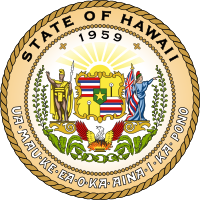HIOSH Injury and Illness Recordkeeping and Reporting Requirements
Disclaimer
HIOSH makes every effort to ensure that this webpage is accurate and up-to-date; however, for the latest information please contact our office.
Overview
Currently, HIOSH §12-52.1-2, HAR incorporates the federal standard, 29 Code of Federal Regulations Part 1904, specifically the 2017 Edition published as of July 1, 2017. Therefore information on this webpage pertains to those under HIOSH jurisdiction.
Recordkeeping Requirements
Employers with more than 10 employees are required to keep OSHA Injury and Illness record(s) (i.e., OSHA 300, 300A, and 301 forms) of serious work-related injuries and illnesses (certain low-risk industries are partially exempted see §12-52.1-2, HAR Appendix A to Subpart B). Minor injuries requiring first aid only do not need to be recorded.
This information helps employers, workers and HIOSH evaluate the safety of a workplace, understand industry hazards, and implement worker protections to reduce and eliminate hazards -preventing future workplace injuries and illnesses.
Maintaining and Posting Records
The records must be maintained at the worksite for at least five years. Each February through April, employers must post a summary (i.e., OSHA 300A) of the injuries and illnesses recorded the previous year. Also, if requested, copies of the records must be provided to employees, or their representatives.
Reporting Requirements
Report to HIOSH office via telephone (808) 586-9102 or in person at the HIOSH office (830 Punchbowl St #425., Honolulu, HI 96813) of the following (§12-52.1, HAR):
- within 8 hours after the death of an employee from work-related incident; and
- within 24 hours of:
- inpatient hospitalization of an employee
- employee’s amputation
- employee’s loss of an eye as a result of a work-related incident
- property damage in excess of $25,000 as a result of work-related incident.
When the HIOSH office is closed, the (808) 586-9102 telephone number will allow you to leave a phone message. In order for the message to be considered officially reported, all of the information in 29 C.F.R. §1904.39(b)(2) must be provided on the answering machine message (see FAQs What Information do I need to give to HIOSH when reporting?).
Electronic Submission of OSHA Injury and Illness Forms
Covered establishments must electronically submit to the Injury Tracking Application (ITA) their OSHA injury and illness data by March 2 of the year following the covered year of the data. For example, for submission of calendar year 2024 data, that date is March 2, 2025. Submission window to submit is between January 2nd to March 2nd annually.
Private Sector Employers
Establishments with 250 or more employees. If your establishment had 250 or more employees at any time during the previous calendar year and this part requires your establishment to keep records, then you must electronically submit information from OSHA 300A Summary of Work-Related Injuries and Illnesses to OSHA or its designee (e.g., Injury Tracking Application).
Certain Establishments with 20-249 employees. If your establishment had 20 or more employees but fewer than 250 employees at any time during the previous calendar year, and your establishment is classified in an industry listed in Appendix A to Subpart E of this part, then you must electronically submit information from OSHA 300A Summary of Work-Related Injuries and Illnesses to OSHA or its designee (e.g., Injury Tracking Application).
Upon notification: You must electronically submit the requested information from your OSHA injury and illness records to OSHA or OSHA’s designee (e.g., Injury Tracking Application).
Public Sector Employers
State and City & County Government Agencies (only): Upon notification from HIOSH office, submit the requested OSHA Injury & Illness Record(s) to [email protected] specified in the notification. Do not submit any information to Injury Tracking Application.
Frequently Asked Questions (FAQs)
Recording
Reporting
Electronic Submission of OSHA Injury and Illness Forms
FAQs for the OSHA-managed ITA is found at https://www.osha.gov/injuryreporting/faqs
Resources
- Fact Sheet(s):
- Recordkeeping Rule: Required vs Exempt (PDF)
- HIOSH Handbook for Small Businesses (2023) (PDF)
- HIOSH Recordkeeping Manual (PDF)
- HiTools
- OSHA 300, 300A, 301 Forms (PDF)(Excel)
- Partially Exempt Industries for Recordkeeping (PDF)
- Recordkeeping PowerPoint Presentation 2013 (PDF)
- Reporting an Incident (PDF)
- To Record Not to Record STS in Hearing (PDF)
- North American Industry Classification System (NAICS)
- HIOSH Standard (§12-52.1, HAR) on Recordkeeping and Reporting (PDF)
- Injury Tracking Application (ITA)
- General Information
- FAQs
- Help Request Form
- ITA User Guide (PDF)

